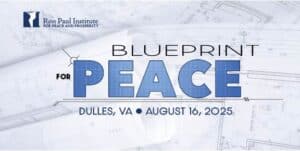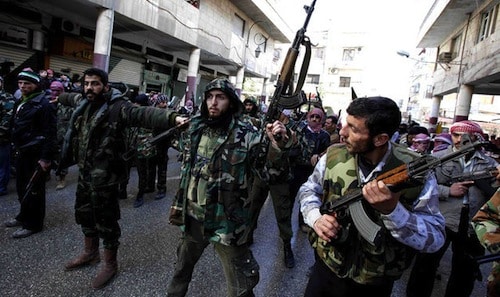
The standard mainstream narrative of the war in Syria is that President Bashar al-Assad’s opponents only took up arms after his regime cracked down brutally on peaceful protesters in March 2011. The New York Times, for example, in a piece this week on ISIS reminds that “after a brutal crackdown by government forces, Syrian protest groups morphed into fighters”.
The problem with this narrative is that it is false.
Here’s what the Times is referring to: On March 25, 2011, it described how tens of thousands of peaceful protesters took to the streets and were met with regime violence that killed a reported 38. The protests had begun seven days before (March 18), according to the Times.
Likewise, CNN begins its timeline of events in March 2011 with the killing of dozens of protesters in Daraa, and Reuters pinpoints it a couple days before the Times, on March 16, when security forces broke up a protest in Damascus and arrested 30.
It was only after this mid-March crackdown, according to the Times and the rest of the media, that the regime’s opponents took up arms.
Yet already on March 21, Israel’s Arutz Sheva reported that in addition to four protesters, seven police were killed and a courthouse and the Ba’ath party headquarters in Daraa were torched.Arutz Sheva described how the police “opened fire on armed protesters” (emphasis added).
Indeed, an entire month before the entire Western media says the conflict began with a regime crackdown on peaceful protesters, Egypt’s Al-Ahram Weekly was reporting the existence of the infamous Free Syrian Army (FSA), which was “fighting the Syrian regime using defectors from the regular armed forces.”
And there was already talk “of creating buffer zones around Damascus, near the Syrian-Jordanian border, and on the Syrian-Turkish border.” (Bassel Oudat, “Syria after the veto,” Al-Ahram Weekly, February 9-15, 2011.)
The point is not that armed violence against the regime came first; Al-Ahram explains how protests had been taking place already by then for nearly a year and that the regime’s crackdown was fueling support for the FSA. The point is simply that the mainstream narrative whitewashes clear indications that plans were already well underway to attempt to overthrow the Assad regime.
Iran at the time, already in February, was describing an “international conspiracy” involving funding and arming the armed rebels in Syria against the regime — hardly an incredible claim.
Indeed, cables released by Wikileaks showed that the US had been funding anti-regime organizations since 2005, under a program begun under the Bush administration and continued under Obama. One cable noted that the Syrian regime “would undoubtedly view any US funds going to illegal political groups as tantamount to supporting regime change”.
It’s no secret the neoconservatives who were so influential under the Bush administration — whose policies Obama continued and even escalated — had had their sights on Syria for a long time, including it on a list of seven countries to be targeted for regime change. (Iraq, of course, was at the top of the list.)
So next time you read how “after a brutal crackdown by government forces, Syrian protest groups morphed into fighters”, remember that Syria was the object of efforts by the US government to effect regime change, that opposition groups had already received US funding for many years. And, of course, the CIA later — or perhaps already by that time — served the role of coordinating the flow of arms to the armed rebels from its regional partners Saudi Arabia and Qatar — with most of the arms falling into the hands of “Islamic” extremists.
The media’s practice of omitting this context when describing the origins of the conflict in Syria is mirrored in the larger propaganda narrative that has since been pushed on the public: that it has been Obama’s inaction that has allowed the situation to blow up as it has — rather than the disastrous situation being a direct consequence of the US’s policy of deliberately prolonging the violence.
Correction from author: The Al-Ahram articles I referred to were misdated and were actually published in 2012, not 2011. For more details about the error, please click here.
Reprinted with permission from author’s website.


